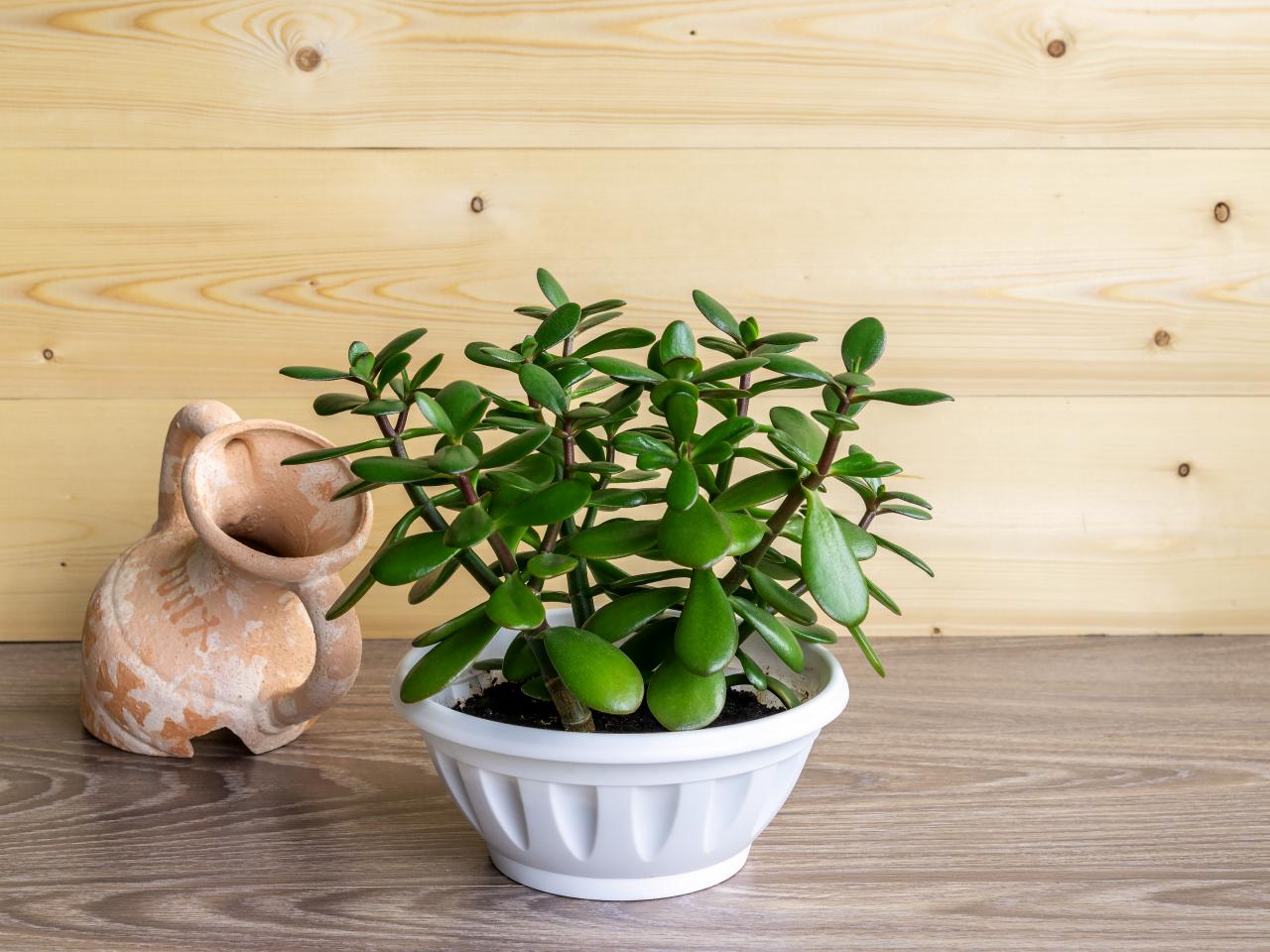
Jade Plant, also known as Crassula ovata, is a fascinating succulent that captivates plant enthusiasts with its unique beauty and interesting characteristics. This versatile houseplant not only adds a touch of greenery to any space, but it also brings good fortune and positive energy according to ancient beliefs. Native to South Africa, the Jade Plant has become popular worldwide for its ability to thrive in various environments and its low-maintenance nature. In this article, we will explore nine extraordinary facts about the Jade Plant that will deepen your appreciation for this wonderful plant. From its symbolic meaning to its impressive longevity, prepare to be amazed by the wonders of the Jade Plant. So, let’s dive in and uncover the remarkable secrets of this remarkable succulent.
Key Takeaways:
- Jade Plant is a low-maintenance, long-lasting houseplant that symbolizes prosperity and good luck. It can survive with minimal care and is a popular choice for beginners and busy individuals.
- The Jade Plant is native to South Africa, has medicinal uses, and is considered a Feng Shui plant. It can be easily propagated and has toxic effects on pets if ingested.
Jade Plant is a Symbol of Prosperity and Good Luck
The Jade Plant, scientifically known as Crassula ovata, is a popular houseplant that is believed to bring good luck, prosperity, and fortune to its owner. This succulent plant is often associated with financial success and is commonly placed near entrances or in business establishments to attract wealth.
It Can Survive with Minimal Care
One of the reasons why the Jade Plant is a favorite among plant enthusiasts is its ability to thrive in low-maintenance conditions. This succulent is known for its tolerance to drought and can go for long periods without water. Additionally, it can adapt to various light conditions, making it an ideal choice for beginners or busy individuals who want to incorporate greenery into their space.
Jade Plant Leaves Store Water
The thick, fleshy leaves of the Jade Plant serve as water storage units, allowing the plant to withstand dry periods. These jade green leaves have a glossy appearance and are oval-shaped with a slight curve. As the plant receives ample water, the leaves become plump and vibrant, providing an attractive display.
It is Native to South Africa
The Jade Plant is native to the Eastern Cape of South Africa, where it is found growing in rocky, dry regions. It is well-suited to arid climates and hence has adapted to survive in the harsh conditions of its natural habitat.
Jade Plant Can Live for Decades
With proper care and maintenance, the Jade Plant can live for several decades. Some specimens have been known to survive for over a hundred years, making it a long-lasting companion for plant enthusiasts. Its durability and longevity contribute to its desirability as an indoor plant.
It is Considered a Feng Shui Plant
The Jade Plant holds significant importance in Feng Shui, a Chinese practice that focuses on harmonizing energies in the environment. It is believed that placing a Jade Plant in the southeastern part of a home or office brings good fortune and prosperity. The rounded leaves of the plant symbolize wealth and growth, making it a popular choice among Feng Shui enthusiasts.
Jade Plant Can Be Propagated Easily
One of the remarkable characteristics of the Jade Plant is its ability to propagate easily. Simply taking a stem cutting and planting it in well-draining soil can result in a new plant. This makes it a great plant for sharing with friends and family or expanding your indoor garden collection.
It is Toxic to Pets
While the Jade Plant is known for its beauty and resilience, it is important to note that it can be toxic to pets, especially cats and dogs. Ingesting the leaves or stems of the plant can cause vomiting, lethargy, and other symptoms in animals. Therefore, it is crucial to keep the Jade Plant out of reach from curious pets.
Jade Plant Has Medicinal Uses
Traditionally, the Jade Plant has been used in herbal medicine for its various therapeutic properties. Some cultures believe that applying the sap of the plant to wounds can promote healing. However, it is always best to consult with a healthcare professional before using any plant for medicinal purposes.
These were the 9 extraordinary facts about the Jade Plant, a fascinating and versatile houseplant that brings beauty and luck to any space. Whether you are an avid gardener or a plant enthusiast, adding a Jade Plant to your collection can not only enhance the aesthetics of your home but also invite positive energy and prosperity.
Conclusion
In conclusion, the Jade Plant is truly an extraordinary succulent that captivates both seasoned gardeners and beginners alike. Its unique attributes, such as its vibrant green foliage, symbolic significance, and ease of care, make it a must-have addition to any plant enthusiast’s collection. The Jade Plant’s ability to bring good luck, wealth, and prosperity is just an added bonus to its already impressive qualities. Whether you’re looking to add a touch of beauty to your home or reap the benefits of its positive energy, the Jade Plant is a fantastic choice. So go ahead, indulge in the enchanting world of the Jade Plant and experience the wonder it brings to your life.
FAQs
1. How often should I water my Jade Plant?
The watering needs of a Jade Plant can vary depending on factors such as the temperature, humidity, and size of the plant. As a general rule, you should water your Jade Plant thoroughly when the top inch of soil feels dry. Avoid overwatering as it can lead to root rot.
2. Can I place my Jade Plant in direct sunlight?
While Jade Plants thrive in bright, indirect sunlight, they can tolerate some direct sunlight, especially in the morning or late afternoon. However, prolonged exposure to intense sunlight can scorch the leaves, so it’s best to provide some shade during the hottest part of the day.
3. How often should I fertilize my Jade Plant?
During the growing season (spring and summer), you can fertilize your Jade Plant once a month using a balanced, water-soluble fertilizer diluted to half the recommended strength. In the cooler months, reduce the frequency of fertilizing to every two to three months.
4. Can I propagate my Jade Plant?
Absolutely! Jade Plants are relatively easy to propagate. You can propagate them using stem or leaf cuttings. Simply allow the cuttings to callus for a few days, then place them in well-draining soil. Keep the soil lightly moist and in a warm location until they establish roots.
5. Why is my Jade Plant losing leaves?
Jade Plants may lose leaves due to various reasons, such as overwatering, underwatering, or insufficient light. Check the moisture level of the soil and adjust your watering schedule accordingly. Ensure that your plant is getting enough sunlight (bright, indirect light is best). Avoid abrupt changes in temperature as it can cause leaf drop.
6. Can I grow my Jade Plant outdoors?
Yes, you can! Jade Plants can be grown outdoors in temperate climates where temperatures do not drop below 50°F (10°C). Choose a well-draining spot with partial shade, and protect the plant from extreme heat or cold. Keep in mind that outdoor Jade Plants tend to grow larger than those kept indoors.
7. Are Jade Plants toxic to pets?
Yes, Jade Plants are considered toxic to pets, especially cats and dogs. The plant contains compounds that can cause nausea, vomiting, and other symptoms if ingested. It’s best to keep Jade Plants out of reach of curious pets or opt for pet-friendly plants if you have furry companions in your home.
8. How big can a Jade Plant grow?
A healthy, well-cared-for Jade Plant can grow up to 3 feet (90 centimeters) in height. However, the growth rate can vary depending on environmental conditions and care. Regular pruning and shaping can help maintain a manageable size for indoor cultivation.
9. Can I bonsai my Jade Plant?
Yes, Jade Plants are well-suited for bonsai cultivation. Their pliable branches and compact growth make them ideal for shaping and pruning. Start with a young Jade Plant, choose a shallow container, and follow proper bonsai techniques to create a miniaturized version of this stunning succulent. Patience and regular maintenance are key to successful Jade Plant bonsai cultivation.
Jade plants are truly remarkable, offering beauty, resilience, and even good fortune. Their unique characteristics make them beloved by plant enthusiasts worldwide. If you found these facts about jade plants intriguing, you might also enjoy learning more about their fascinating cousin, Crassula. Crassula plants boast their own set of astonishing qualities that are sure to captivate any plant lover's interest. So why not continue your journey of discovery and uncover the secrets of these incredible succulents?
Was this page helpful?
Our commitment to delivering trustworthy and engaging content is at the heart of what we do. Each fact on our site is contributed by real users like you, bringing a wealth of diverse insights and information. To ensure the highest standards of accuracy and reliability, our dedicated editors meticulously review each submission. This process guarantees that the facts we share are not only fascinating but also credible. Trust in our commitment to quality and authenticity as you explore and learn with us.


